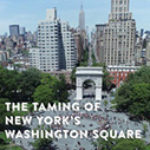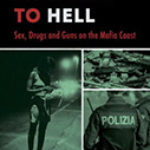Occupied Territory: Policing Black Chicago From Red Summer To Black Power

Author: Simon Balto
Publisher: Chapel Hill: University of North Carolina Press, 2019. 360p.
Reviewer: Michael Flamm | September 2019
The news from Chicago was grim in 2016. The third-largest city in the United States had more homicide victims – almost eight hundred – than New York and Los Angeles combined. Since then the crisis in Chicago has abated slightly. But deadly shootings remain a daily occurrence, which the police seem largely powerless to stop, in part because a century of corruption, abuse, and violence has discredited them in the eyes of most black residents, and many whites as well.
In Occupied Territory, Simon Balto tells that story and he tells it well, shifting easily from broad description to painful detail. Every chapter offers insightful and impassioned analysis leavened with case studies of black victims like Tommy Melson, a wounded veteran who was shot by a white officer four days after Christmas in 1951 (106). At times the author’s language becomes overheated and crosses the line from empathy and engagement to partiality and politicization. At others he critiques capitalism and liberalism in ways that are unlikely to convince many readers who do not already share his radical assumptions and premises. Nevertheless, his outrage is understandable and justifiable, given the mountain of evidence that he presents against the Chicago Police Department (CPD).
The author shows how the CPD consistently over-patrolled and under-protected black neighborhoods in the name, spoken or unspoken, of defending white interests – economic, political, and social. As a result, black residents reaped the worst of all worlds. On one side, abusive interrogations and heavy-handed police raids hammered the black community. Under Mayor Anton Cermak, for example, 87 percent of all police operations in the early 1930s targeted the South Side (70). On the other, the CPD used arrest records to contend that blacks were more prone to gamble, use drugs, and commit acts of violence than whites, who gradually disappeared from the crime statistics by the 1960s.
Occupied Territory offers a sweeping account of a century of dishonor by the CPD. The book moves swiftly from the Great Migration of the 1910s and the Race Riot of 1919 to the Prohibition battles of the Roaring Twenties and the rent strikes of the Great Depression. The author then transitions to the postwar struggles over racial integration in public housing, and the heroin crisis, which hit the black community especially hard, although selective enforcement and prosecution may well have inflated the figures (140). Finally, we reach the civil rights era of the 1960s, when both liberals like Dr. Martin Luther King, Jr. and radicals like Panther leader Fred Hampton ran afoul of the CPD and the Daley machine.
For all the ground that Occupied Territory covers, it presents few details about white or black officers. When Balto does mention the latter, he tends to show little sympathy for, or understanding of, their difficult position. In the section on “Black and Blue,” for example, he concentrates on Sylvester Washington, a legendarily mean and violent officer known as “Two-Gun Pete” (118-119). At the end, the author notes that Washington “didn’t reflect the attitudes of all or even most black police officers” (120). But Balto then selectively employs Washington as a “straw man” to buttress his larger argument that more black officers would not have significantly altered the CPD’s structural racism, which is a fair point.
The most important intervention in Occupied Territory concerns the federal wars on crime and drugs, which have attracted a great deal of scholarly attention. Here the author convincingly argues that they had a minimal impact at the local level for two reasons. First, the dollars were not substantial – not when the CPD already received a quarter of the city’s entire budget by the 1970s (246). Second, CPD policies and practices such as “stop and frisk” and aggressive preventive policing were already deeply entrenched and imposing disproportionate harm on the black community by 1965, when Lyndon Johnson launched the War on Crime.
Balto also provides a useful reminder that for all the attention the “police riot” at the Democratic Convention in August 1968 has garnered, none of the white demonstrators was killed or even seriously injured. They only received a taste of the violence that CPD officers routinely unleashed on black residents, eleven of whom had died five months earlier in the civil unrest that followed the King assassination. Almost fifty years later, the black superintendent of the CPD lamented how in 2016 the controversial recorded shooting of teenager Laquan McDonald by a white officer meant that “now the police are perceived as the bad guy, and they’re not given the benefit of the doubt anymore.” What Occupied Territory compellingly calls into serious question is whether the CPD should ever have received the benefit of the doubt.
Professor Michael Flamm, Ohio Wesleyan University


